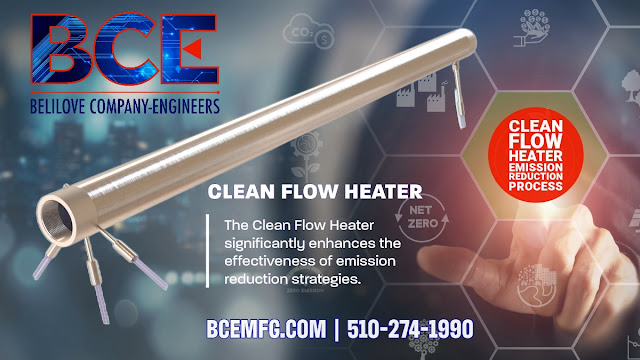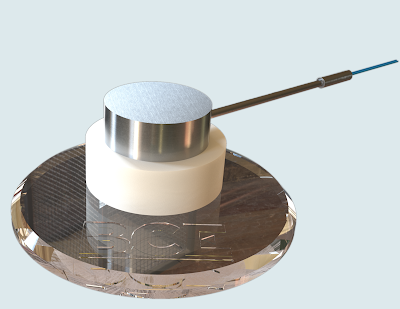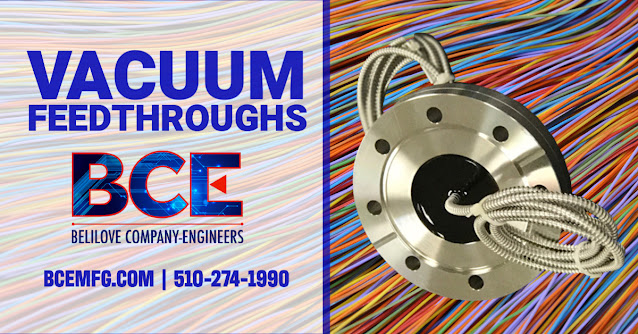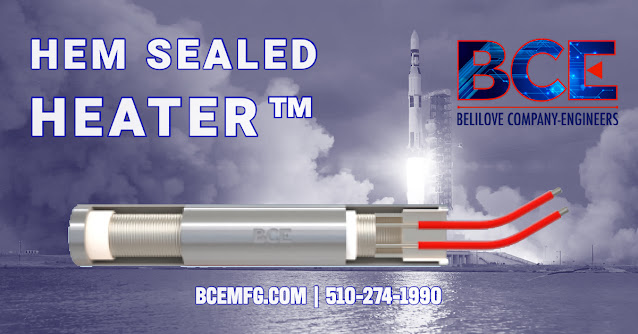An instructional blog about specialized electric heating elements and vacuum feedthroughs for the OEM, analytical, semiconductor, aerospace, pharmaceutical, chemical, water, environmental, food processing, and alternative energy markets. Please feel free to contact us at (510) 274-1990 with any questions. BCEmfg.com
Advancing Semiconductor Technology with BCE's Vented Hole Heater Chuck
Securing Your Wafers: BCE's Vented Hole Heater Chuck
Unwavering Wafer Stability
Eliminating Air and Gas Imperfections
Optimized Heat Transfer
Defying Contaminants
21060 Corsair Blvd. Hayward, CA 94545
510-274-1990
https://bcemfg.com
Precision Electric Heaters, Thermal Solutions, and Vacuum Feedthroughs
Aerospace & Space, Semiconductor, Analytical & Medical Instruments, Packaging Industry
Specialized Heater and Feedthrough Solutions
Revolutionizing Air Pollution and Emission Reduction with BCE's Clean Flow Heater
BCE's Clean Flow Heater: A Game Changer
Advantages of Electric Heating
- They provide precise temperature control, which is crucial for catalytic conversion and selective catalytic reduction.
- Electric heating is often more energy-efficient than burning fossil fuels for heat.
- Electric heating elements can be designed to fit into various pieces of equipment and can be easily controlled to provide the required heat.
- Using electricity for heating can result in lower emissions of pollutants, mainly if the electricity is generated from renewable sources.
The BCE Hi-Temp Puck Heater
Compression Fitting Feedthrough: A Versatile Solution for Tube and Thermocouple Feedthroughs
- Compressible vacuum flange offers the following features:
- Temperature range: 0°C to +180°C (limited by O-ring's maximum temperature capacity)
- Material: Stainless steel 304
- 1/8" compression fitting with a 7/16" hex bored through
- Compression of any 1/8" diameter tubing or sensor
- 304 stainless steel KF40 and KF50 flanges
- He Leak Tested to achieve a leak rate of 1 x 10¯⁸ ATM, CC/sec or better (leak rate after compression depends on the material and wall thickness of the tubing, as well as the strength of compression)
The Critical Role Vacuum Feedthroughs Play in Industry
Vacuum feedthroughs are vital in various industries that require maintaining a vacuum environment while transferring materials, data, or energy through the vacuum barrier. Key industries include:
- Semiconductor Manufacturing: Vacuum feedthroughs are essential for maintaining a controlled environment while producing integrated circuits, photovoltaic cells, and other semiconductor devices.
- Aerospace and Space Research: Vacuum feedthroughs are used in space simulation chambers, vacuum testing of spacecraft components, and satellite testing, ensuring the integrity of the vacuum environment and enabling data and power transmission.
- Pharmaceutical and Biotechnology: Vacuum feedthroughs are used in vacuum-based processes such as lyophilization (freeze-drying), vacuum distillation, and sterilization, ensuring the transfer of materials and data without compromising the vacuum environment.
- High-Energy Physics Research: Vacuum feedthroughs are crucial in particle accelerators, such as the Large Hadron Collider (LHC), where they allow the transfer of electrical signals, cooling fluids, and other materials while maintaining a high-vacuum environment.
- Thin Film Deposition and Surface Science: Vacuum feedthroughs are used in vacuum-based processes like physical vapor deposition (PVD), chemical vapor deposition (CVD), and sputtering to ensure the transfer of materials, data, and power without affecting the vacuum.
- Materials Science: Vacuum feedthroughs are used in various material processing techniques, such as vacuum annealing, vacuum brazing, and vacuum sintering.
- Electronics and Optoelectronics: Vacuum feedthroughs are essential for maintaining a vacuum environment during the manufacturing and testing various electronic and optoelectronic components, including vacuum tubes, sensors, and detectors.
- Nuclear Research and Fusion: Vacuum feedthroughs are used in nuclear research facilities and fusion reactors to transfer data, power, and materials while maintaining a vacuum environment.
These are just a few examples of industries where vacuum feedthroughs play a crucial role, but there are also many other applications. BCE specializes in crafting premium vacuum feedthroughs tailored to various applications and industries. Our expert engineers bring decades of design and development know-how, amassing an invaluable empirical data and insights repository. At BCE, we are eager to accommodate your unique feedthrough needs, ensuring that our custom-designed solutions effectively address your most demanding challenges.
Vacuum Heater Platens
Vacuum heater platens typically contain a flat metal plate with integrated heating elements and a vacuum system. The heating elements provide uniform temperature distribution across the surface of the platen, while the vacuum system creates a sealed environment that can maintain specific pressure levels.
These heaters are used for applications that require precise temperature control and a vacuum environment, such as:
- Semiconductor manufacturing: Vacuum heater platens are used to heat wafers during various processing stages to ensure uniform temperature distribution and prevent contamination from particles in the air.
- Composite material manufacturing: Vacuum heater platens are used in the curing process of composite materials, providing uniform temperature and pressure, which is crucial for achieving optimal material properties.
- Aerospace industry: Vacuum heater platens are used for bonding and curing processes of various components, such as carbon fiber composites, in aircraft and spacecraft manufacturing.
Vacuum heater platens help improve product quality and reliability by providing a controlled environment for temperature-sensitive processes.
HEM Sealed Heater™ - Bench Test to 250°C
- Temperature range of -55⁰C to +200⁰C Sheath Temperatures
- Stainless steel 321 for heated zone, 304 Hem Sealed Cap
- 18AWG to 32AWG Kapton®/polyimide Lead wires
- 500Watt (± 10%) , 240 Volt, 1-phase
- He Leak Tested = 5 x 10¯⁹ ATM, CC/sec or better
- Hi-Pot Test 1K*2E 1 2 seconds (1500-2250VDC 0.5mA)
- Meg-Ohm 20 to 4,000+ @ 500VDC








